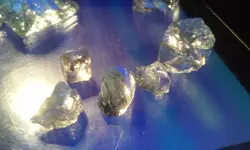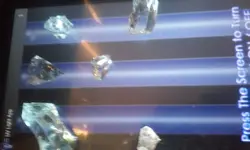I'll tell you 2 quick ways to tell if they are diamonds... 1st, try scratching a corundum crystal. If it scratches the crystal, then it can only be either white saphire, or diamond. Next, let it soak overnite in a plastic container with just enough Whink solution to cover it (Whink is a rust remover and can be found at Walmart. It contains hydrofluoric acid so be careful and read directions.) Next morning, drain and rinse several times to remove solution. If it is diamond, nothing will have happened. If it is white saphire, it will be etched and have a powdery surface. Hydrofluoric acid will eat anything that has silica in it. That means glass and virtually all other crystals that are clear. Other than that, offhand, those look like glass to me due to the cleavage lines exhibited.
Other than Crater of Diamonds in Arkansas, you can find diamonds in the creeks that empty into the Poudres River in Colorado, and in the river itself. You can also find diamonds in the creeks in several places in Wyoming. I've got 31 nice little ones, .25 ct or less, plus the second largest placer diamond ever found in Colorado, 4.92 cts flawless white. I usually us shovel and buckets with various screens and a saruca to pan for them. I also have a 2 1/2inch combo dredge highbanker set up for gemstones from Keene. That I use if I can get down into bedrock. Just like looking for gold...and if you are finding black sand and/or garnets, then you will also find diamonds which are heavy at 3.5 specific gravity. Garnets are a tad lighter...and quartz and glass much lighter.






